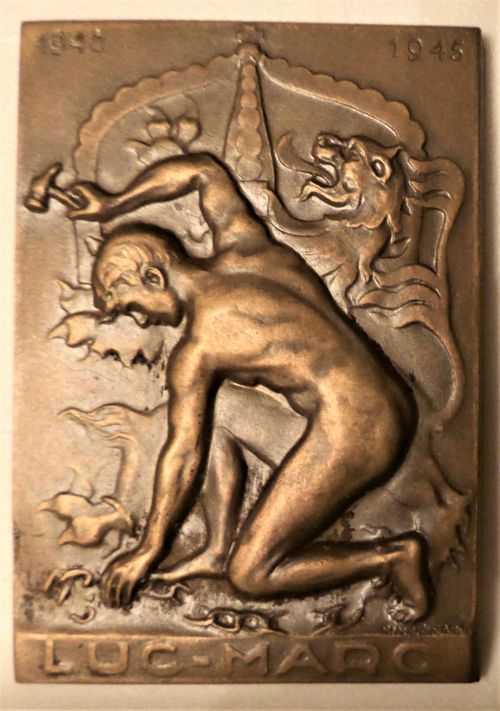Memorial Resistance Fighter Camille Joset
A memorial plaque to Camille Joset hangs at the beginning of the street named after him.
This journalist distinguished himself as a resistance fighter during the two world wars.
On August 4, 1914, he enlisted as a volunteer in the Belgian army.
As a 2nd lieutenant and staff officer, he was attached to the military government of Luxembourg in the intelligence service. Even before the German invasion, he was engaged in espionage.
At the end of the war, Camille Joset received several awards, including the 1914-1918 Civil Cross First Class and the Legion of Honor from the President of the French Republic.
After the armistice, Joset moved to Brussels, where he became director of the press and advertising service at the Ministry of Railways, Posts and Telegraphs, while he was president of the Association of Belgian and Luxembourg Cities. He also became Deputy Royal High Commissioner for the devastated regions of Luxembourg.
In 1939, together with his son Camille-Jean, he became a British intelligence agent and a member of the National Directory of the MNB (Belgian National Movement), of which he took over national command on October 23, 1941, after the arrest of Aimé Dandoy. Taking increasingly greater risks, he was jailed in April of the following year and remained there for three years. Appointed colonel of the resistance in 1947, recognized as a great war invalid, civilian and armed resistance fighter, resistance fighter by the clandestine press and political prisoner, he was elected president of the National Council of the Resistance in 1945.
The Camille Josetlaan leads to the Aimé Dandoy square.
Aimé Dandoy was born in Jumet on November 3, 1908. The family settled in Brussels. In 1928 he did his military service with the rank of corporal.
In 1940 he and his brother ran a hairdressing salon in the Meerstraat in Etterbeek. He took part in the 18-day campaign and was captured by the Germans. He escaped while crossing Limburg and returned to Brussels by bicycle. Soon he was working for an Allied intelligence network and successfully led several missions in Germany.
On December 17, 1940, he founded the Belgian National Movement, one of the most important national resistance networks in Belgium during the Second World War. In July 1941, together with Camille Joset, he founded the clandestine newspaper "La Voix des Belges".
In September 1941 he became the national chairman of the M.N.B.
Aimé Dandoy was arrested by the Gestapo on October 23, 1941 when he received the clandestine newspaper "La Voix des Belges" from the printing house L. Wijckman-F. Schoubben.
He was imprisoned for months in the prison of Saint-Gilles until his trial on
January 20, 1942. He was sentenced to fifteen years of hard labour. On May 20, 1943 he was deported to Germany. He stayed in the camps of Bochum, Esterwegen, Gross-Rosen, Bayreuth and Nordhausen. In 1945 he went missing in Bergen-Belsen.
Source : Wikipedia
Do you have more information about this location? Inform us!
Source
- Text: Marie-Christine Vinck
- Photos: Marie-Christine Vinck
Related books
Nearby
Museum
Point of interest
- Watch Building Bloc Dubreucq - Brussel
- Royal Museums of Fine Arts of Belgium - Brussels
- Law Courts of Brussels - Brussel
Monument
- Memorial Resistance Fighters Etterbeek - Etterbeek (Brussel)
- Memorial Resistance Fighter Louis Schmidt - Etterbeek (Brussel)
- Memorial "Rote Kapelle" - Etterbeek (Brussel)
Cemetery
- Belgian Graves Veterans Ixelles - Elsene (Brussel)
- Italian War Graves Ixelles - Elsene (Brussel)
- Commonwealth War Graves Elsene - Elsene (Brussel)
Remembrance Stone
- Stumbling Stone Rue Général Fivé 8 - Etterbeek (Brussel)
- Stumbling Stone Rue de Ramskapelle 14 - Etterbeek (Brussel)
- Stumbling Stone Avenue des Cazernes 61 - Etterbeek (Brussel)





